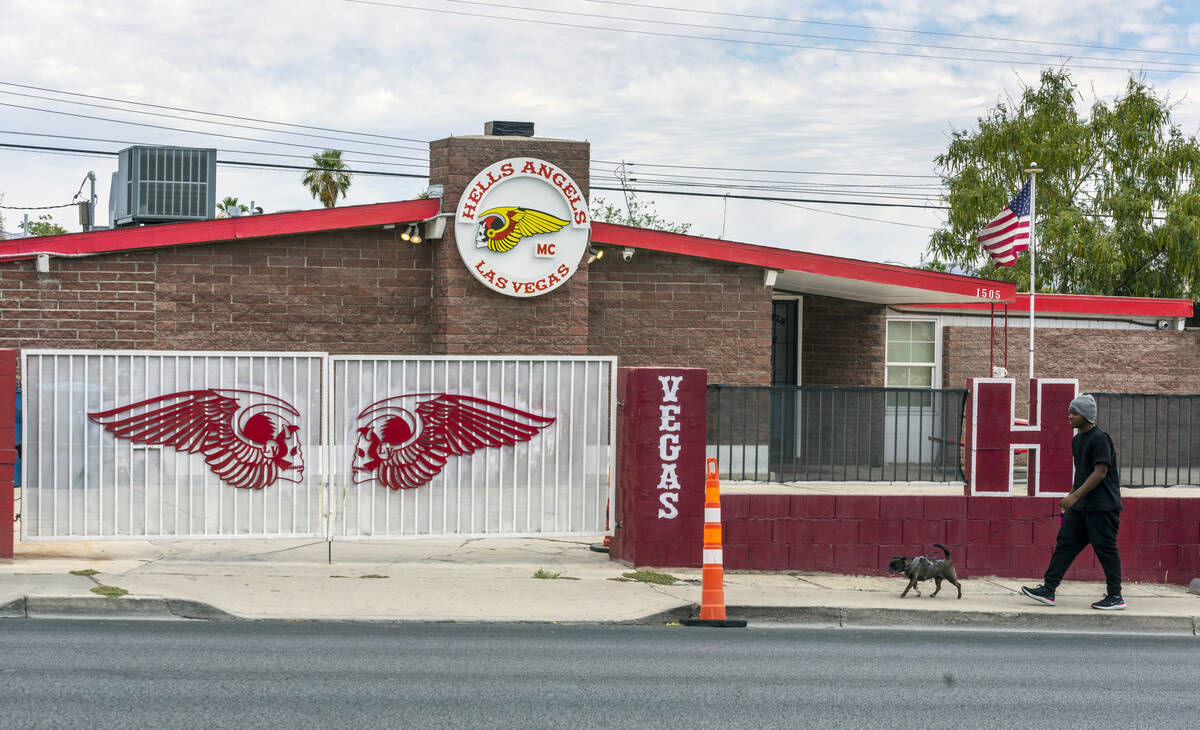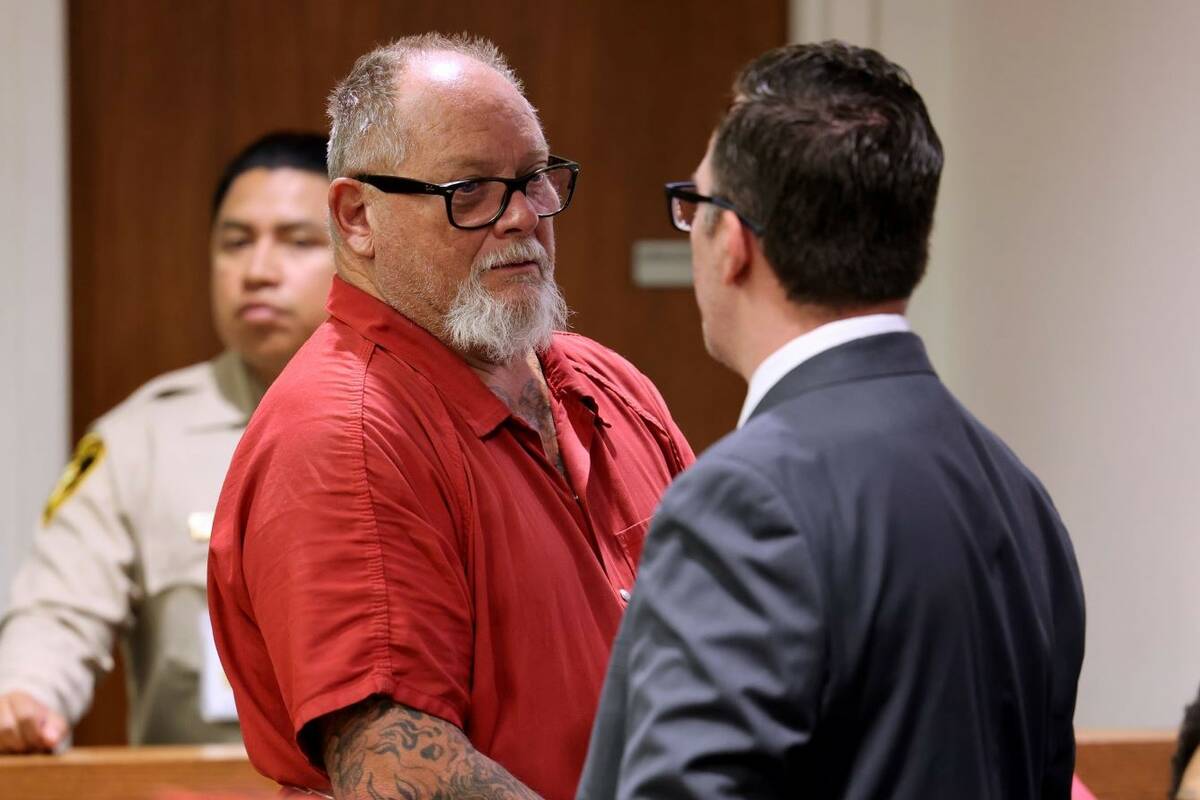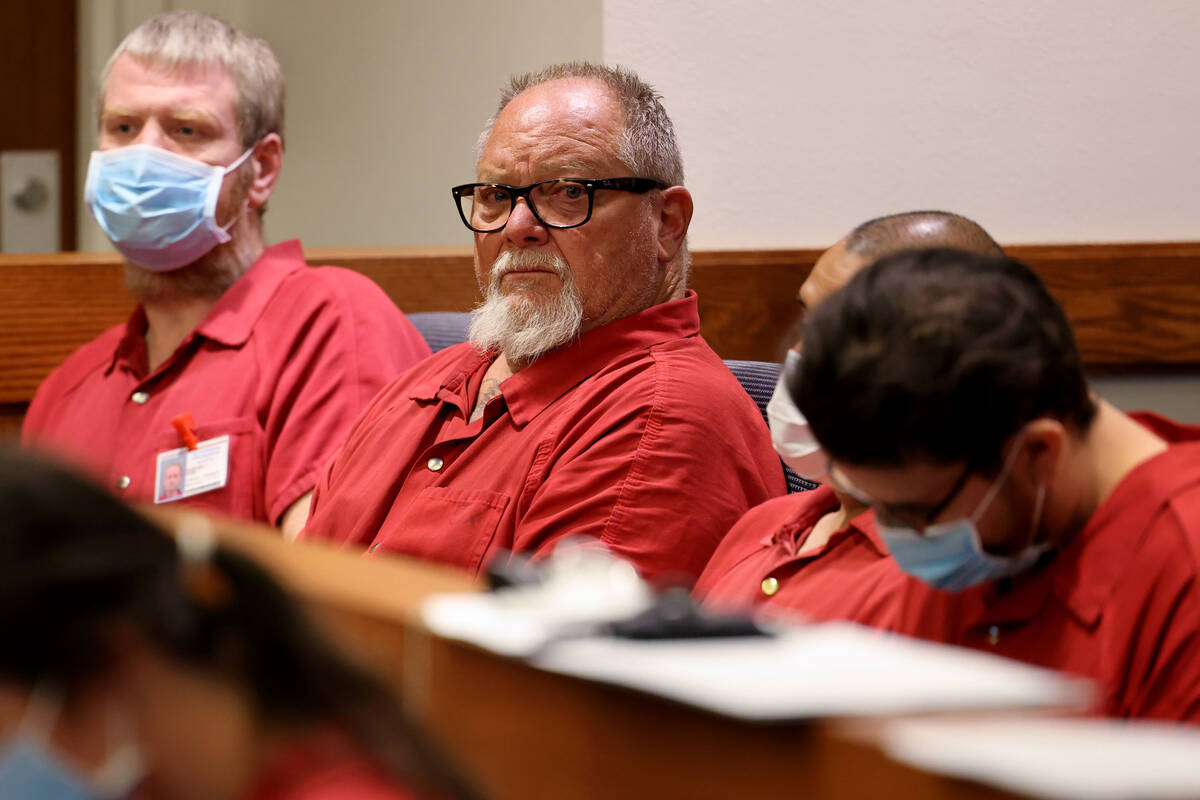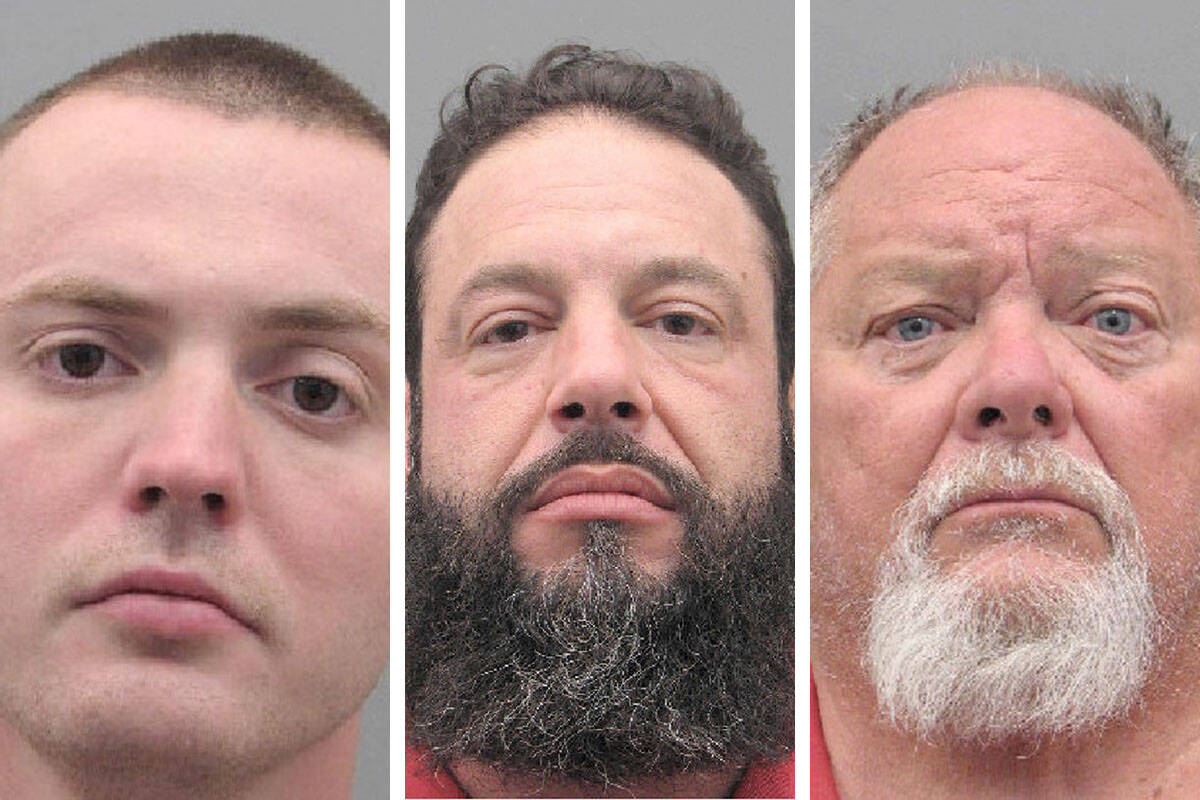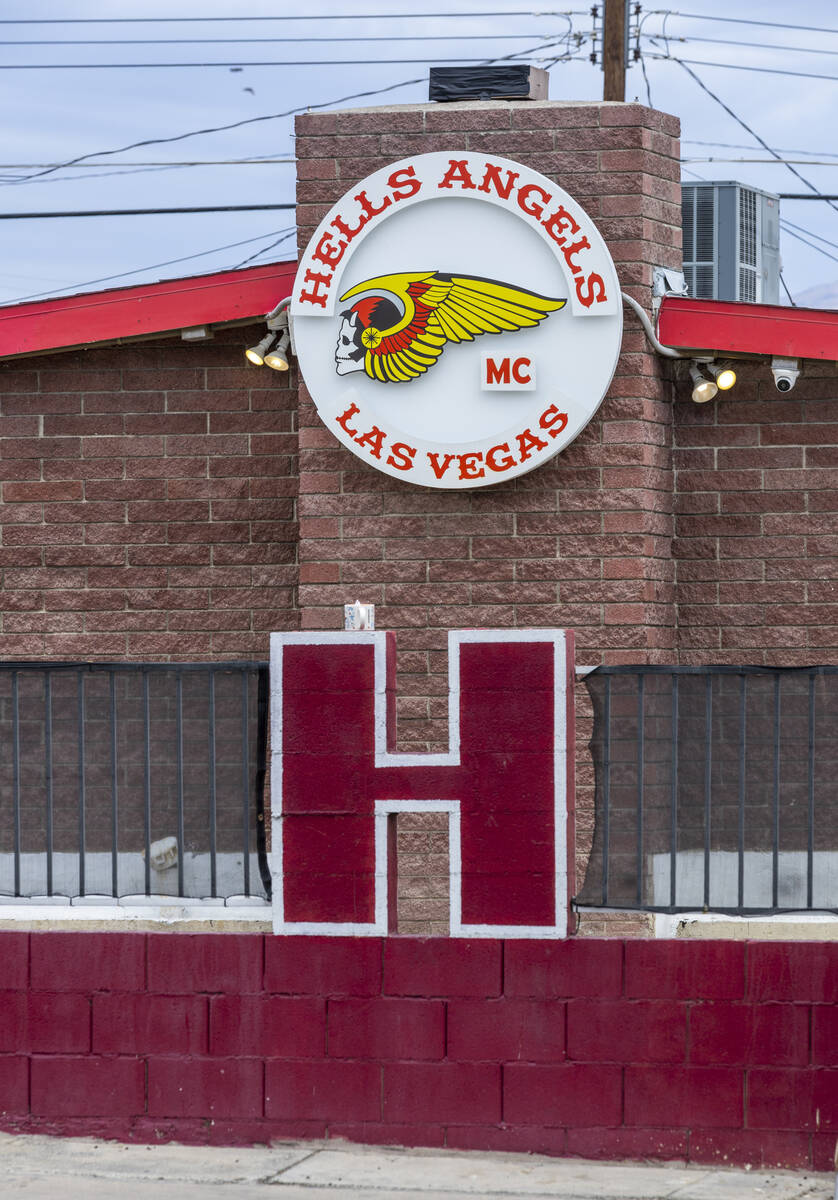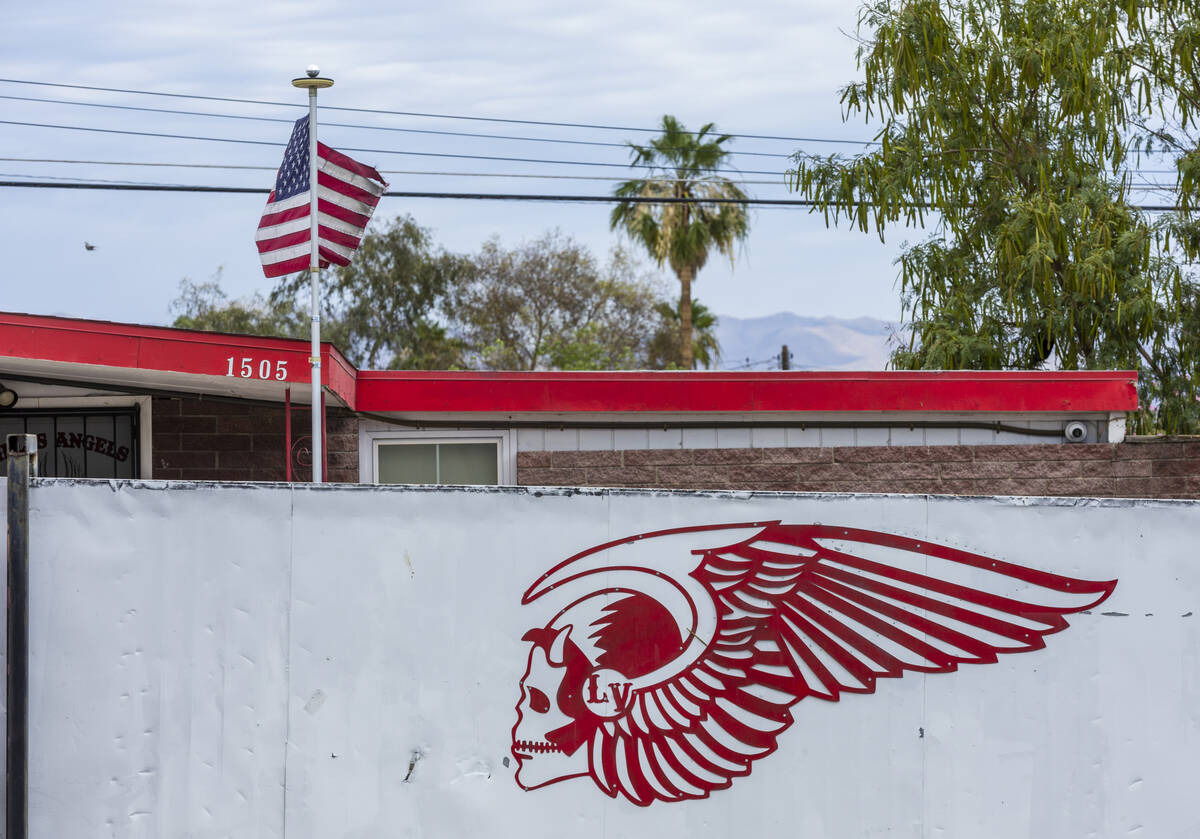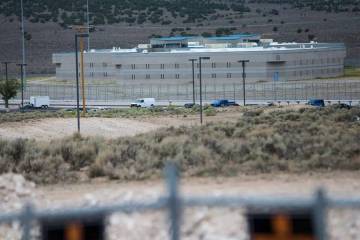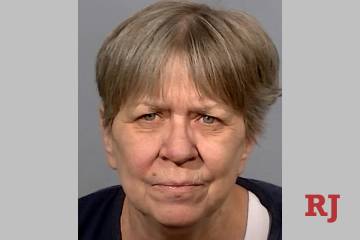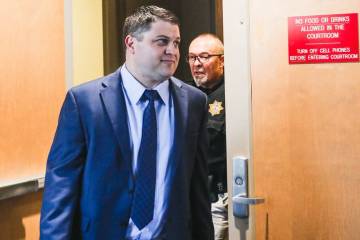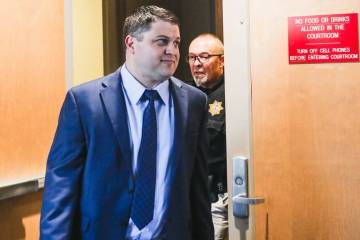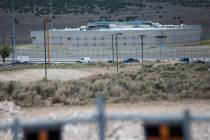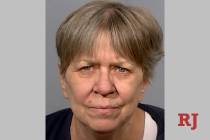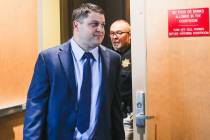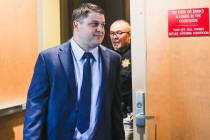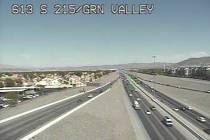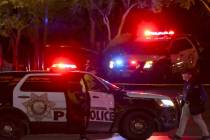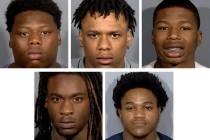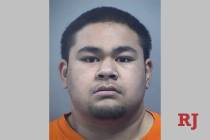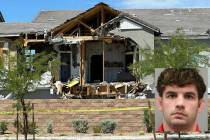Biker clubs in Nevada have long, violent history
When eight Vagos Motorcycle Club members were acquitted in 2020 of murder and racketeering charges, some expected more violence to erupt between the group and its rival, the Hells Angels.
“When all eight of these guys walked from the murder, I thought, ‘Oh boy, there’s going to be some kind of retaliation for this,’ ” said defense attorney Christopher Oram, who represented one of the Vagos bikers.
But there were no significant acts of violence between the groups for nearly 10 years after the 2011 shootout at a Sparks casino, which left a Hells Angels leader dead and led to the murder trial. That changed last month, when officials said a small group of Hells Angels shot at Vagos bikers on U.S. Highway 95 in Henderson on a Sunday morning.
Prosecutors said the attack, which injured six Vagos bikers, may have been an act of retaliation for an April shooting that left a Hells Angels member dead at a bar in San Bernardino, California, the birthplace of the Vagos club.
In a June interview with the Las Vegas Review-Journal, former Hells Angels leader George Christie said the rivalry between the two groups goes back more than a decade. While the exact root of the dispute is unclear, Christie said feuds between motorcycle clubs tend to “ebb and flow,” but will go unresolved for years.
“I think that situation in San Bernardino is the first incident of any significance since 2011,” Christie said.
Laughlin brawl
Since a group of World War II veterans formed the Hells Angels in California in the 1960s, people have emulated and vilified the bikers, Christie said. National motorcycle associations labeled groups such as the Hells Angels “one percenters,” a reference to the minority of bikers they claimed gave other motorcyclists a bad name.
Law enforcement later began referring to them as “outlaw motorcycle gangs.”
The Vagos and Mongols clubs were formed in California in response to the Hells Angels only allowing white bikers into the group. Christie said feuds between the various biker organizations can last decades.
“There’s always tension when one bike club gets around another bike club,” he said.
Christie said he helped orchestrate a peace between the clubs during the 1990s. But the cease-fire ended shortly after Christie said he left the organization, when a brawl broke out between members of the Hells Angels and Mongols at the 2002 Laughlin River Run motorcycle festival.
The massive fight at the Harrah’s casino left three people dead and dozens injured.
Prosecutors indicted 42 Hells Angels in federal court, but only six eventually pleaded guilty in 2006 to committing a violent crime and battery in the aid of racketeering. In 2007, six Mongols pleaded guilty in a state court case for their role in the brawl.
Another brawl between the two groups broke out in 2008 at a downtown Las Vegas wedding chapel in which six people were injured.
Sparks shootout
A few years later, the U.S. Bureau of Alcohol, Tobacco, Firearms and Explosives sent an undercover agent to infiltrate a Las Vegas chapter of the Vagos Motorcycle Club.
In the 2020 federal Vagos trial, Agostino Brancato, the lead undercover agent of Operation Pure Luck, testified that he was a Vagos member for two years, starting in 2011. His testimony described the Hells Angels as “constant rivals” to the Vagos, according to court transcripts.
“Is there ever any peace between the Hells Angels and the Vagos?” federal prosecutor Tracey Batson asked Brancato.
“Not that I’ve ever experienced,” the agent replied.
Brancato testified that he was a “hangaround” — one step lower than a prospective member — for the Vagos at the time of the 2011 shooting, but said he was not inside John Ascuaga’s Nugget when Jeffrey “Jethro” Pettigrew was killed.
Defense attorneys during the trial argued that Pettigrew pulled out his gun first during the fight and that Vagos members were acting in self-defense to stop “active shooters.” Ernesto “Romeo” Gonzalez shot and killed the 54-year-old Hells Angels leader.
Defense attorney Jess Marchese, who represented international Vagos leader James “Jimbo” Gillespie, said the prosecutors’ case was “very weak.”
“It was an overreach by the government for sure,” he said.
The U.S. attorney’s office in Nevada declined an interview request for this article.
No Hells Angels testified during the federal trial, Marchese said. While he emphasized that many of the organizations’ members are “regular folks” with a passion for motorcycles, he said they still follow an unspoken rule to not cooperate with investigators.
“I would also be very surprised if the state will be able to put a case together,” he said about the recent highway shooting.
Oram agreed that based on his experience in the 2020 trial, he doubted anyone injured in the shooting would be willing to take the witness stand.
“They won’t participate. They won’t get on there,” he said.
Grand jury testimony
Three alleged Hells Angels members — Richard Devries, 66, Russell Smith, 26, and Stephen Alo, 46 — have been indicted in connection with the May shooting. They have been charged with 36 felony counts of conspiracy to commit murder, attempted murder, battery with a deadly weapon and discharging a gun at or into an occupied vehicle.
Prosecutors have said Devries is the president of the Las Vegas chapter of the Hells Angels, while Smith and Alo are prospects for the group.
Metropolitan Police Department Detective Benjamin MacDonell testified to a grand jury in June that he spent six years investigating outlaw motorcycle gangs in the valley.
MacDonell said the Vagos club continues to have a “large presence” of more than 50 members in Clark County, but the Hells Angels have only one chapter with three official “full patch” members, and four prospects.
Metro declined an interview request for this article and did not respond to a request to interview MacDonell.
While most of the injured motorcyclists who testified to the grand jury revealed few details, Vagos member Ted Lempart told jurors the attack was “cowardly.”
Lempart also drew connections to prior conflicts during his testimony, court transcripts show.
“In my own personal opinion I think that they think Nevada is weak,” he said. “They did it in Laughlin, I was there. They did it in Reno, I was there. And now the bastards are doing it here.”
Contact Katelyn Newberg at knewberg@reviewjournal.com or 702-383-0240. Follow @k_newberg on Twitter.



